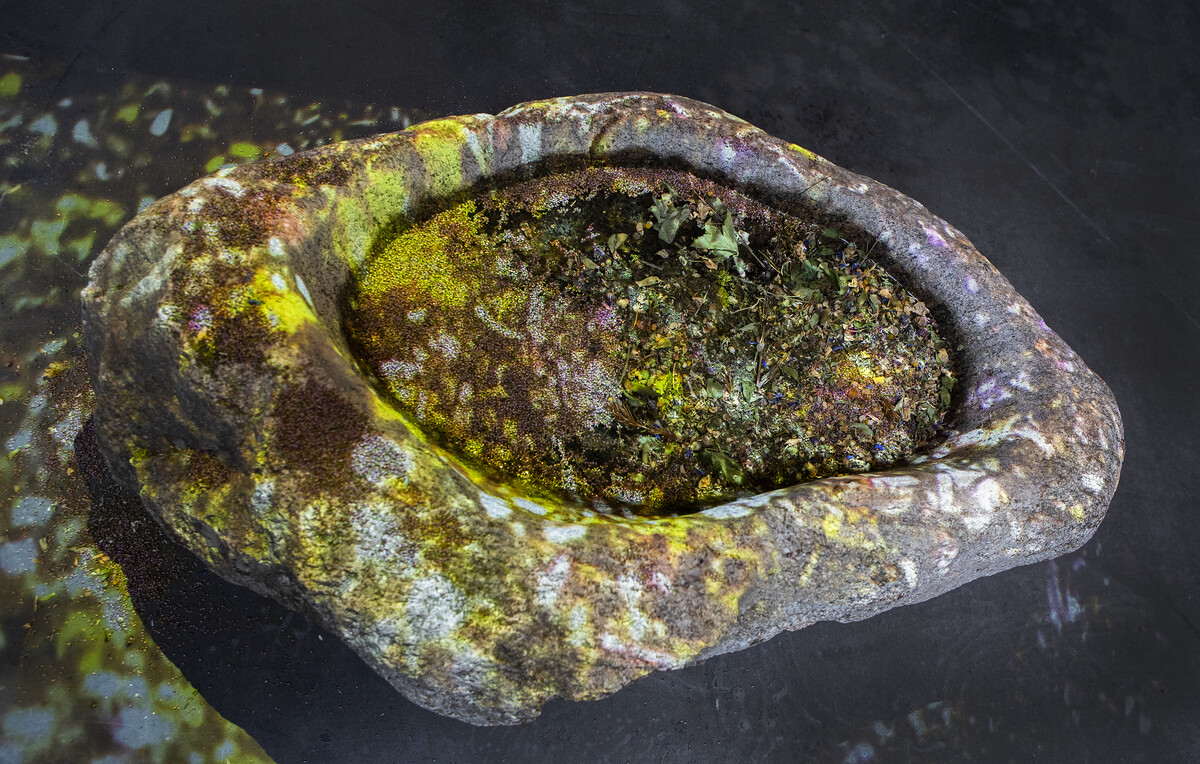(ka) pheko ye—the dream to come
June 8–September 8, 2024
Limmatstrasse 270
8005 Zürich
Switzerland
Hours: Tuesday–Sunday 11am–6pm,
Thursday 11am–8pm
T +41 44 277 20 50
F +41 44 277 62 86
info@migrosmuseum.ch
The dreaming began in Finland. While preparing for the exhibition (ka) pheko ye—the dream to come, Dineo Seshee Raisibe Bopape (*1981, Polokwane, South Africa) immersed herself in Finnish forests and the Frantsila herb farm.
What stories do we tell? Who do we listen to? Blood, sweat, tears, and bodies: memories are stored in nature, in earth, water, herbs, minerals, mountains and stones. With the help of natural materials and audio-visual media, Bopape approaches the question of what we remember. The linear narrative of progress—created on the basis of Western tradition—is incomplete, and holes repeatedly appear. Which stories are not told or are even suppressed? Using dreaming as a medium, the artist kaleidoscopically expands colonial historiography. The dream state allows for an interaction of different realities across species; leaps in time and connections between different places emerge. For example, the myths of mountain dragons exist not only on Mount Pilatus in Switzerland, but also in the Drakensberg (Dragon Mountains) in South Africa. In addition, mountains are ancient repositories of knowledge: the Matterhorn is not only located on the African plate in terms of plate tectonics, but was actually formed from it. Moreover, due to the similar elevation of Finland and Switzerland, the same herbs grow in both. Bopape involves all the senses in these journeys through space and time. In Finland, the artist created a fragrance and a tea to promote dreams, which can be drunk in the exhibition while talking and listening.
The multi-sensory show invites visitors to smell, taste, hear, see, feel and dream. It recalls untold, forgotten and repressed stories and with the help of dreaming, departs from linear narratives. Through remembering, Bopape approaches the desire for collective healing: the dream to come.
Curator: Dr. Michael Birchall; Curatorial assistant: Claudia Heim.
The exhibition is accompanied by a collection exhibition: Material Manipulations is the second of two chapters in an exhibition of works from the museum’s collection. It features works by Marion Baruch, Heidi Bucher, Martín Soto Climént, Thea Djordjadze, Berta Fischer, Raphael Hefti, Sonia Kacem, Pamela Rosenkranz and Xanti Schawinsky.
After Material Memories showed in the first chapter how material can be charged with meaning, the second chapter deals with the aesthetic quality of the materials, focusing on the artistic treatment processes and material experiments.
Since the 1960s, artists have quite naturally resorted to non-permanent or organic materials, working with materials from industry or integrating found objects into their works. The artistic working processes and techniques have changed considerably since then. In contrast to handling materials in industry, there are no limits to processing in art. The exhibition explores how artists challenge material properties and working processes and misuse items. For example, Material Manipulationsshows works of art by Raphael Hefti, who treats museum glass using unusual chemical processes, or by Bertha Fischer, who creates delicate and playful objects from Plexiglas. Martín Soto Climént takes a ready-made everyday object as his starting point and develops poetic choreographies with stiff metal blinds. Sonia Kacem’s work involves transforming cheap plastic foil into a magnificent, monumental spatial installation.
The exhibition unites artistic positions from different generations and geographic contexts: what they have in common, however, is the unconventional use or processing of material and the curiosity to experiment with it.
Curator: Nadia Schneider Willen; Curatorial assistant: Louisa Behr.



